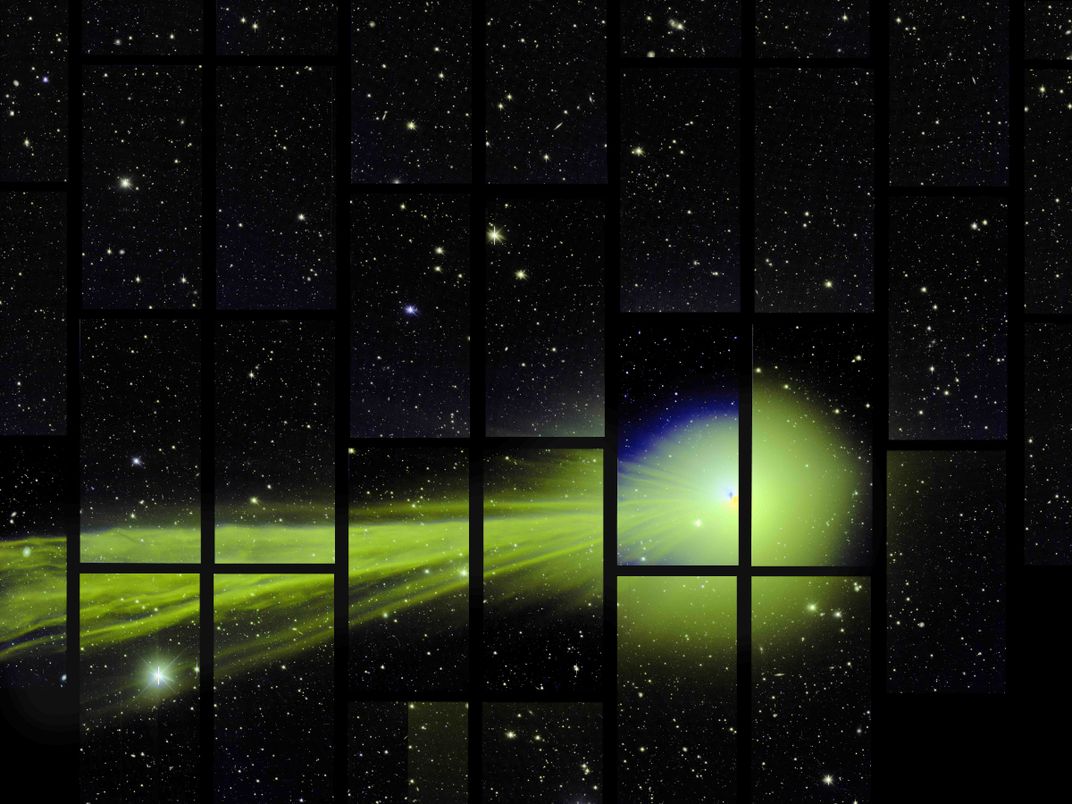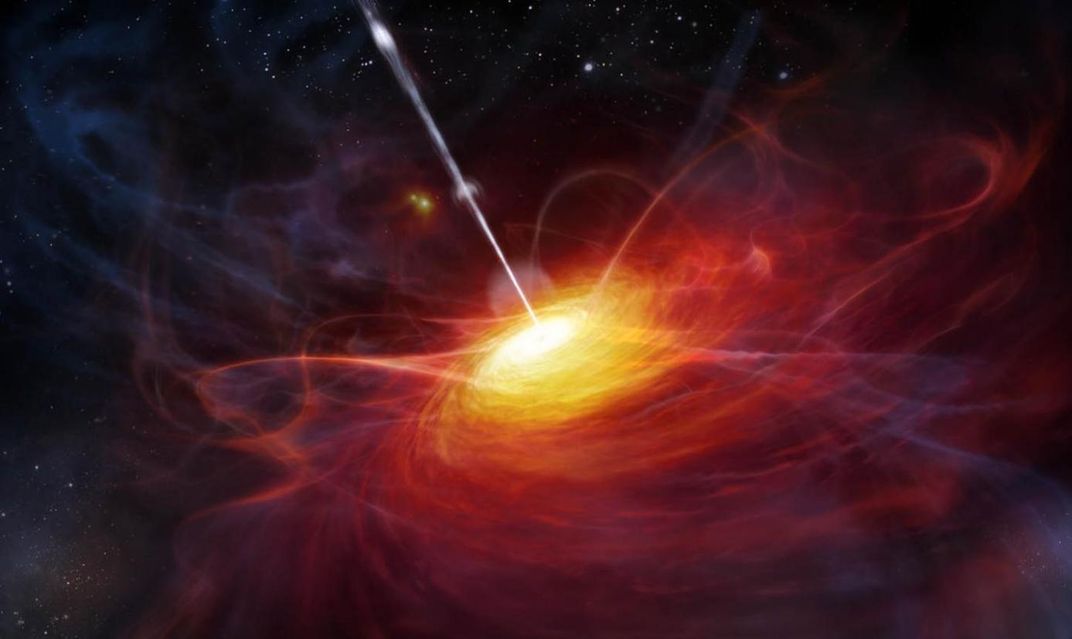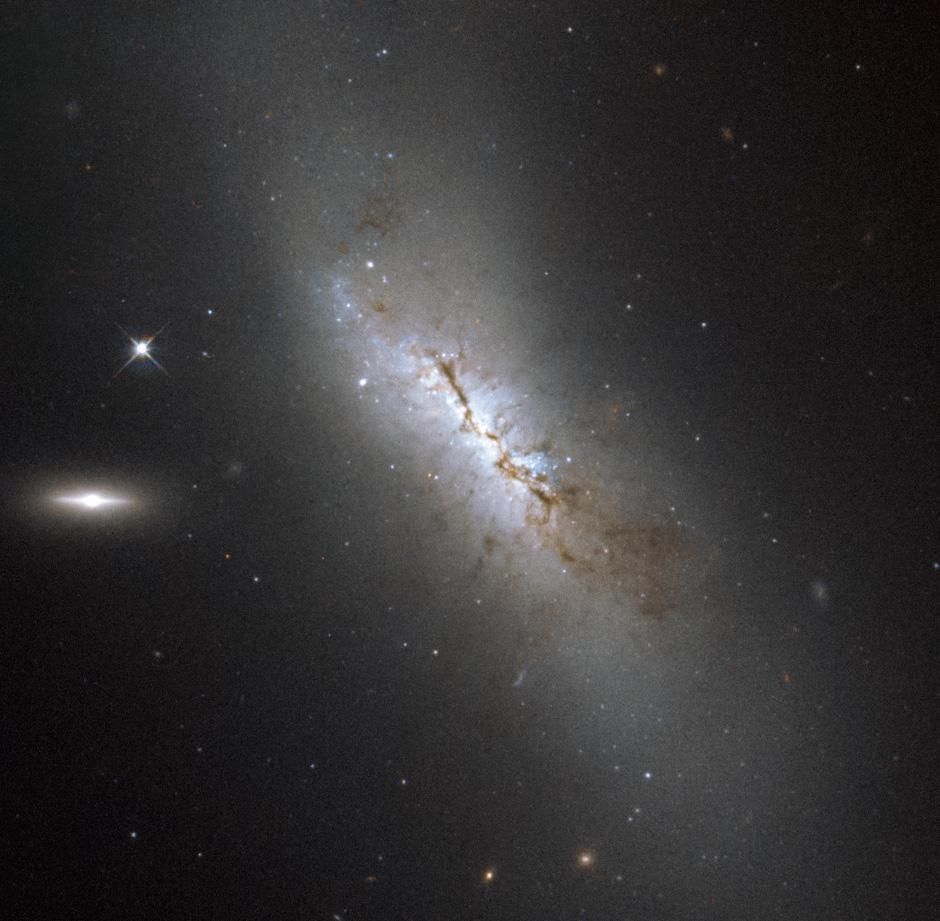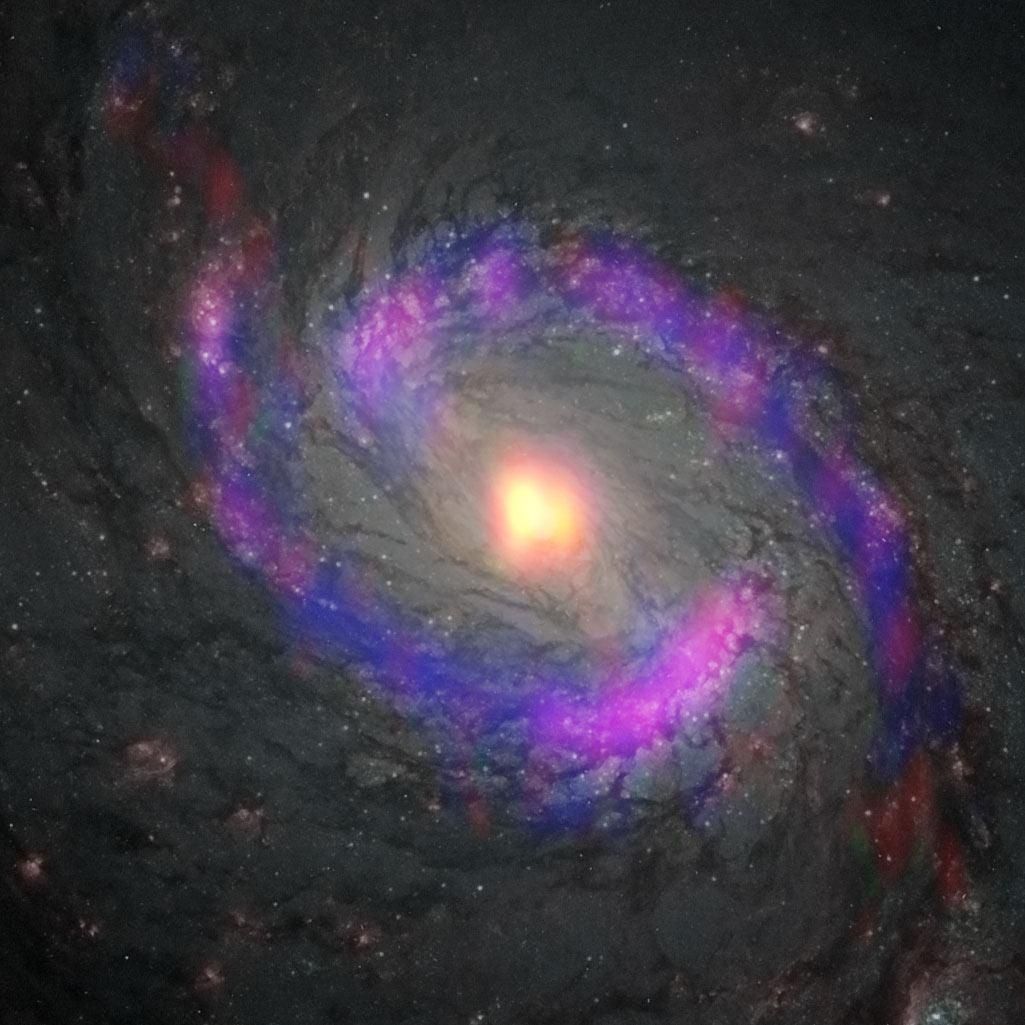These Cosmic Eye-Poppers Include a Technicolor Comet and an Impossible Black Hole
An ancient monster and a turquoise bay feature among our picks for the week’s best space pictures
The world's most powerful digital camera snaps a vibrant comet, astrophysicists find an ancient black hole, astronauts investigate "frozen" alloys and more in our picks for this week's best space images.
.
.
Comet Closeup

When astronomers take a break to snap a few mementos, everybody wins. This image, released on February 27, is a composite shot of comet Lovejoy made with the 570-megapixel Dark Energy Camera, billed as the world's most powerful digital camera. Scientists at the Cerro Tololo Inter-American Observatory in Chile are using the camera to survey the sky in red and near-infrared light to study the rate at which the universe is expanding and hopefully find out more about the mysterious force driving that expansion, known as dark energy. In late December, the team caught comet Lovejoy as it passed about 51 million miles from Earth—a relatively short distance considering that this camera is sensitive to light coming from objects up to 8 billion light-years away.
Heavyweight Black Hole

Somehow, a black hole in the young universe went through an impossible growth spurt. This week astronomers described the supermassive black hole at the center of the extremely bright active galaxy SDSS J0100+2802. Combining optical and infrared data from telescopes in China and Arizona, scientists found that the black hole is a whopping 12 billion times the mass of our sun, even though it formed just 900,000 years after the Big Bang. That's far heftier than any other black hole seen so far from that era, and the discovery challenges current theories for how quickly black holes can grow.
Branching Bay

On January 20 NASA’s EO-1 satellite snapped this recently released image of Musa Bay in Iran. This shallow estuary, which drains into the Persian Gulf, has supported shipping activity since the 4th century B.C. Today it is home to Iran's busiest port city, Bandar Imam Khomeini. The industrial area at top left is a petrochemical plant, where refineries create fuels, plastics and other products. Dark wastewater can be seen spilling into the turquoise branches, but sediments collected from the bay suggest that pollution levels are no higher here than they are around similar plants worldwide.
Virgin Spiral

This Hubble Space Telescope image shows the galaxy called NGC 4424, which sits about 50 million light-years away in the constellation Virgo. Because of Hubble's viewing angle, the galaxy looks like a simple blob of stars. But if we could rotate around it, we'd see its true shape—a delicate spiral disk a lot like our home galaxy, the Milky Way. To the left, Hubble also captured a small galaxy called LEDA 213994 along with a bright but anonymous star that's part of our galaxy.
Pockets of Calm

Gentle oases live deep in the turbulent heart of the galaxy NGC 1068. Like other mature galaxies, NGC 1068 hosts a supermassive black hole at its core, and this titan is feeding on a disk of hot matter that is falling into its maw. The activity spews high-energy X-rays and UV rays, which should break apart complex organic molecules. But this image from the ALMA radio telescope in Chile shows pockets of cyanoacetylene (yellow), carbon monosulfide (red) and carbon monoxide (blue) oddly near the black hole. The science team thinks these regions contain especially dense gases, which are shielding the molecules from the punishing radiation.
Frozen Metal

What happens when liquid metal "freezes" into a solid? Answering this question could help researchers design better materials for pipes, airplane wings and other critical systems. So researchers aboard the International Space Station conducted an experiment, watching a plastic alloy change form in the controlled conditions of microgravity. The alloy solidifies like a metal, but because it is transparent, scientists can get a better look at the fine structures that take shape as it cools from a liquid to a solid. This image, for instance, shows a cell-like growth pattern. The experiments revealed that these cells oscillate as they grow based on their underlying pattern. Too much motion can cause the tiny structures to collapse, yielding a weaker material.